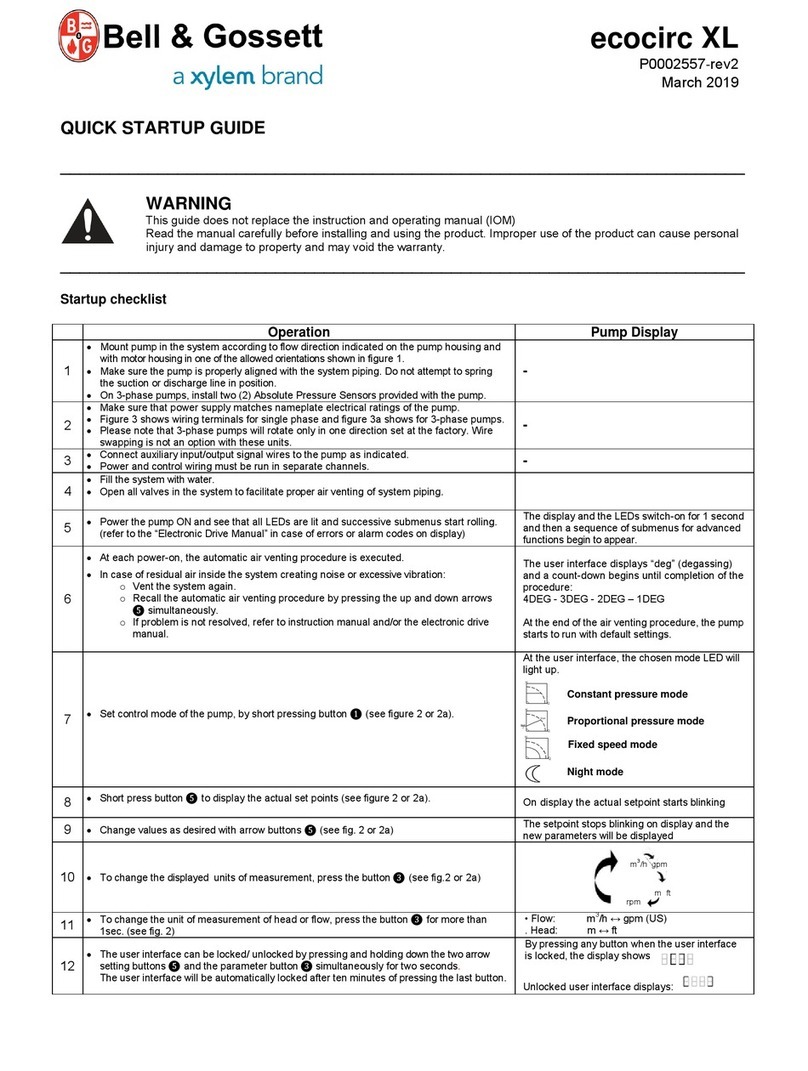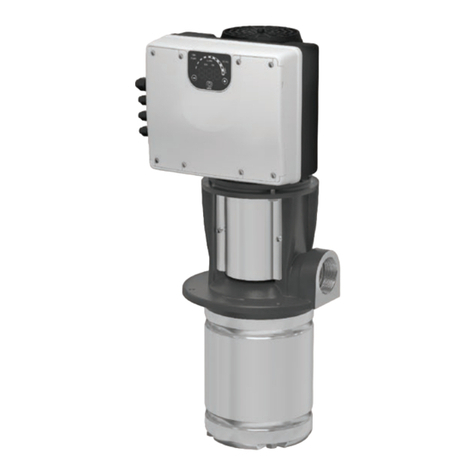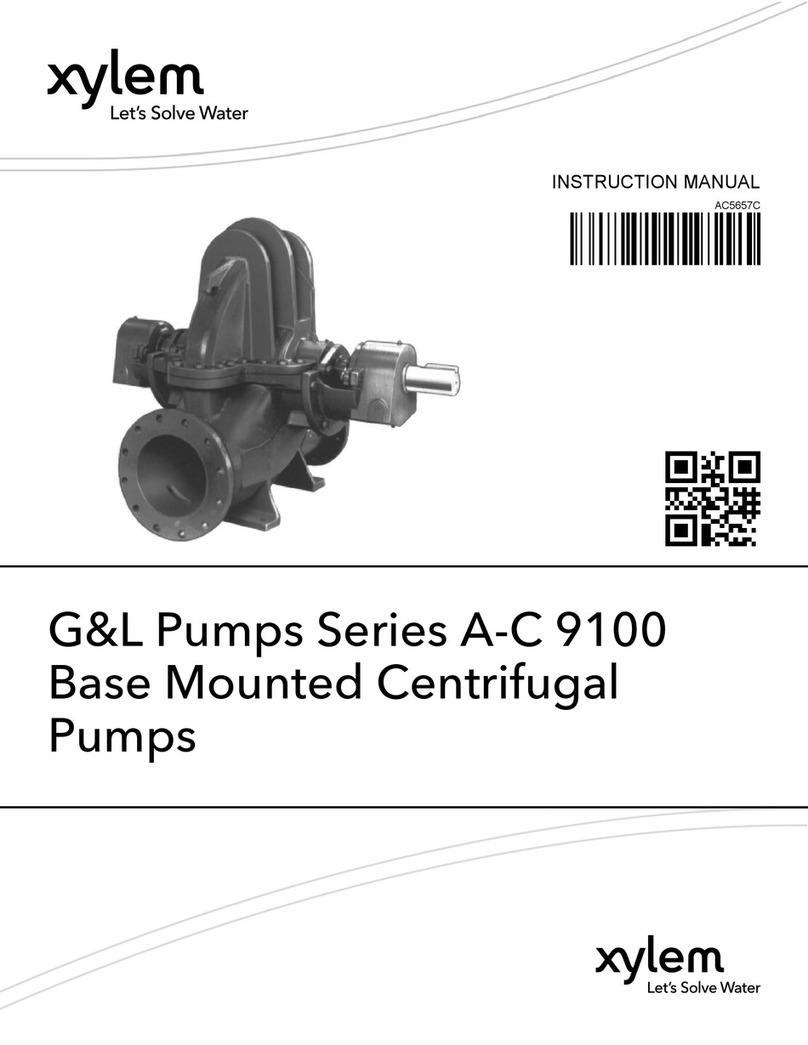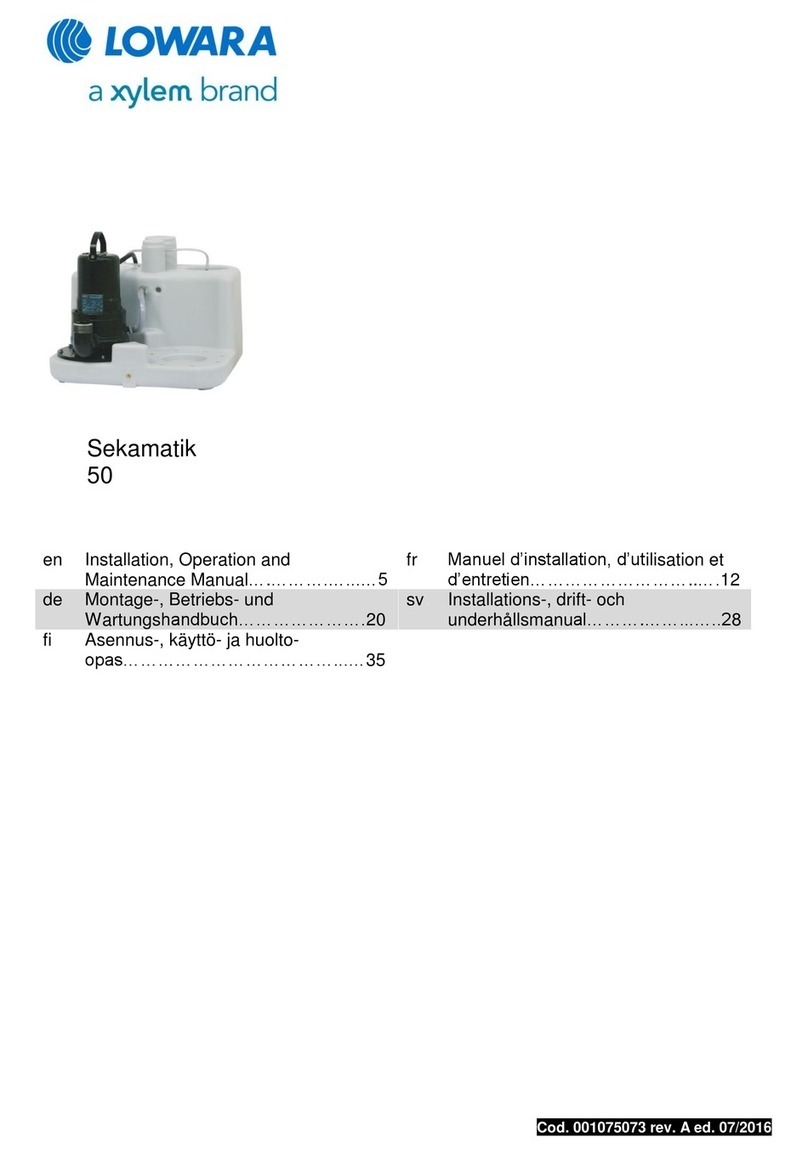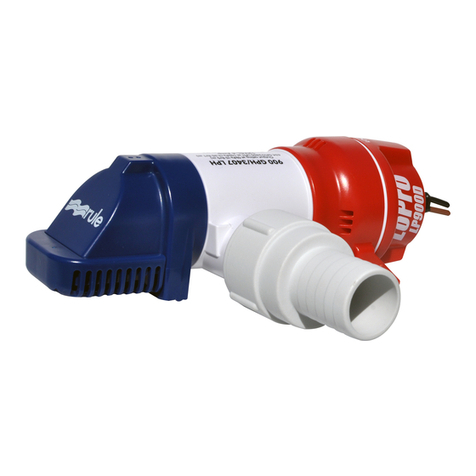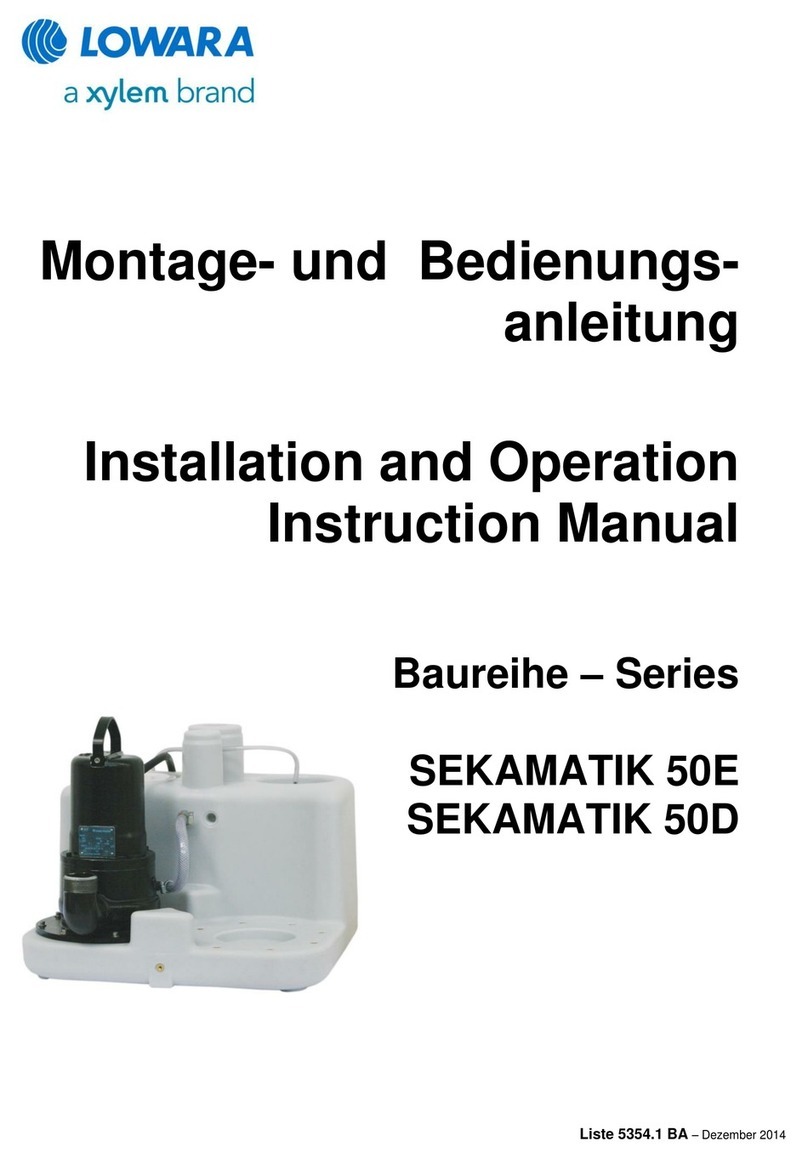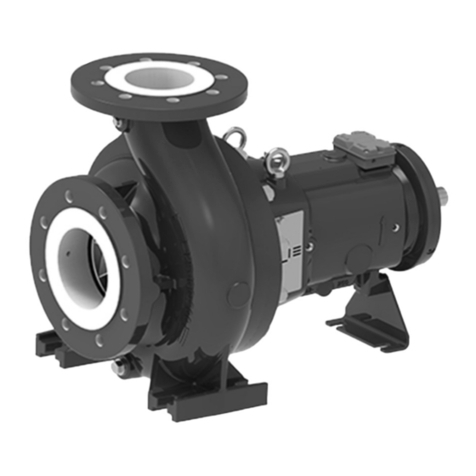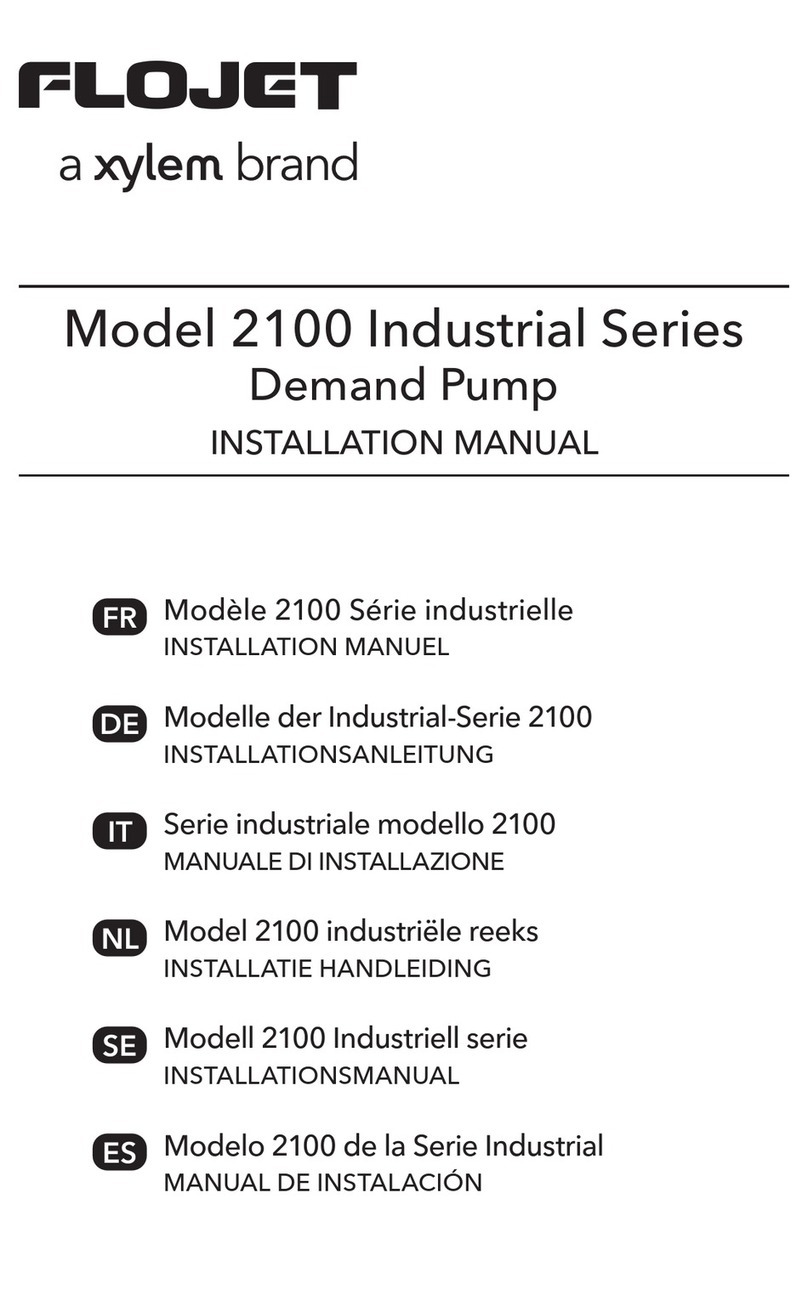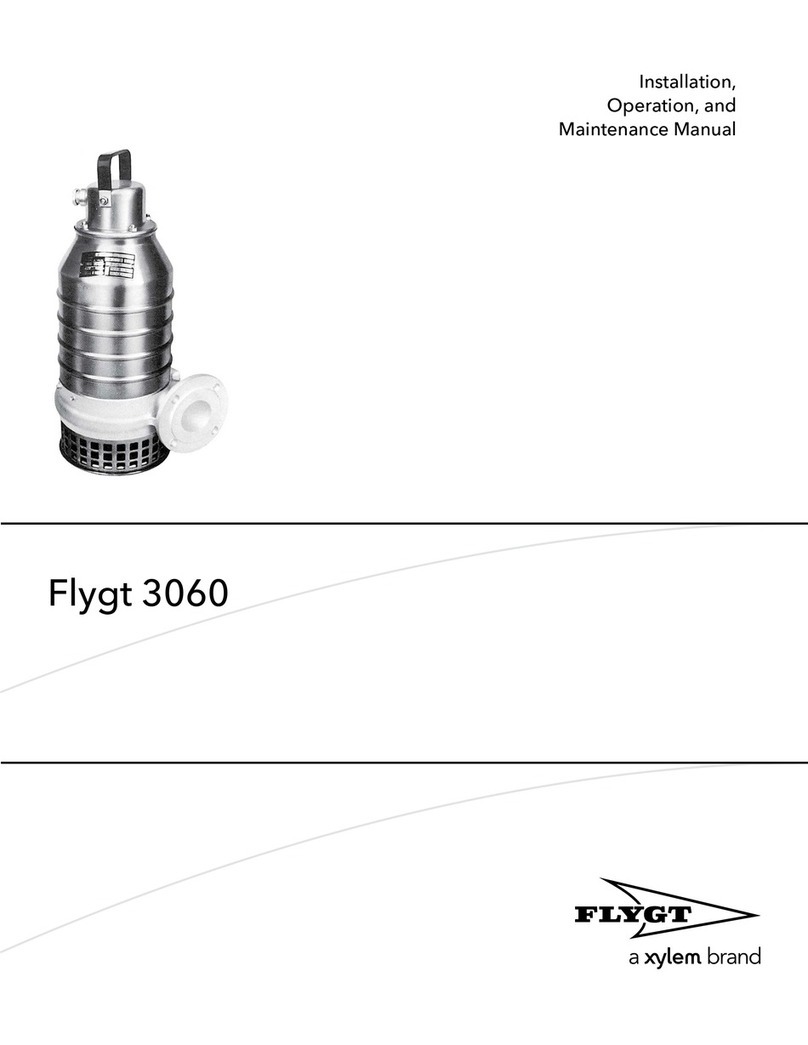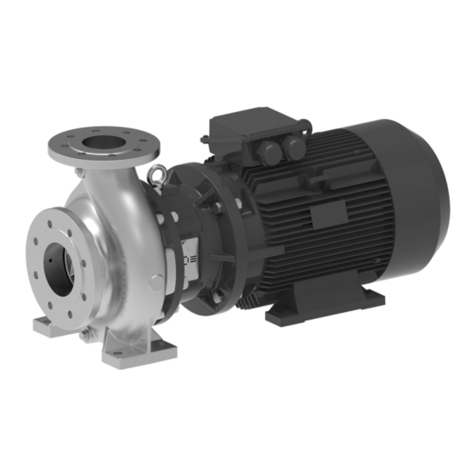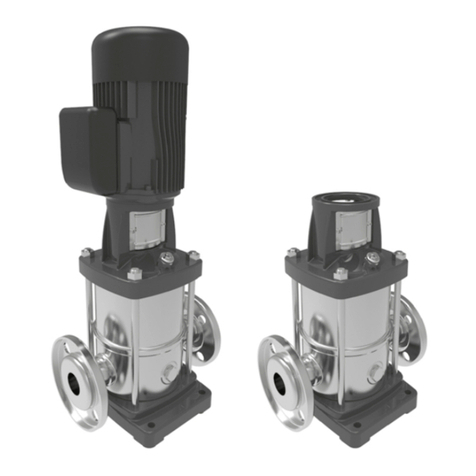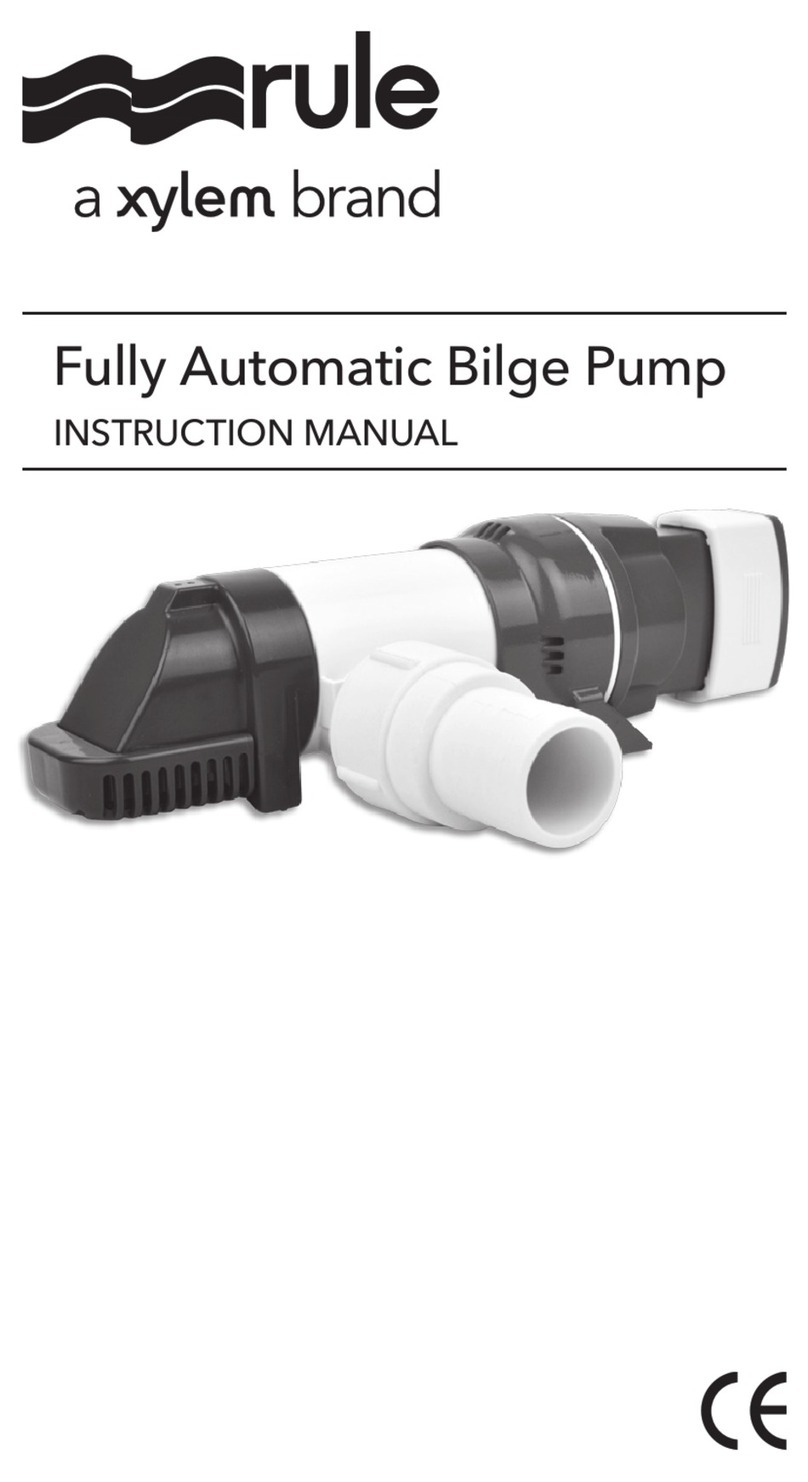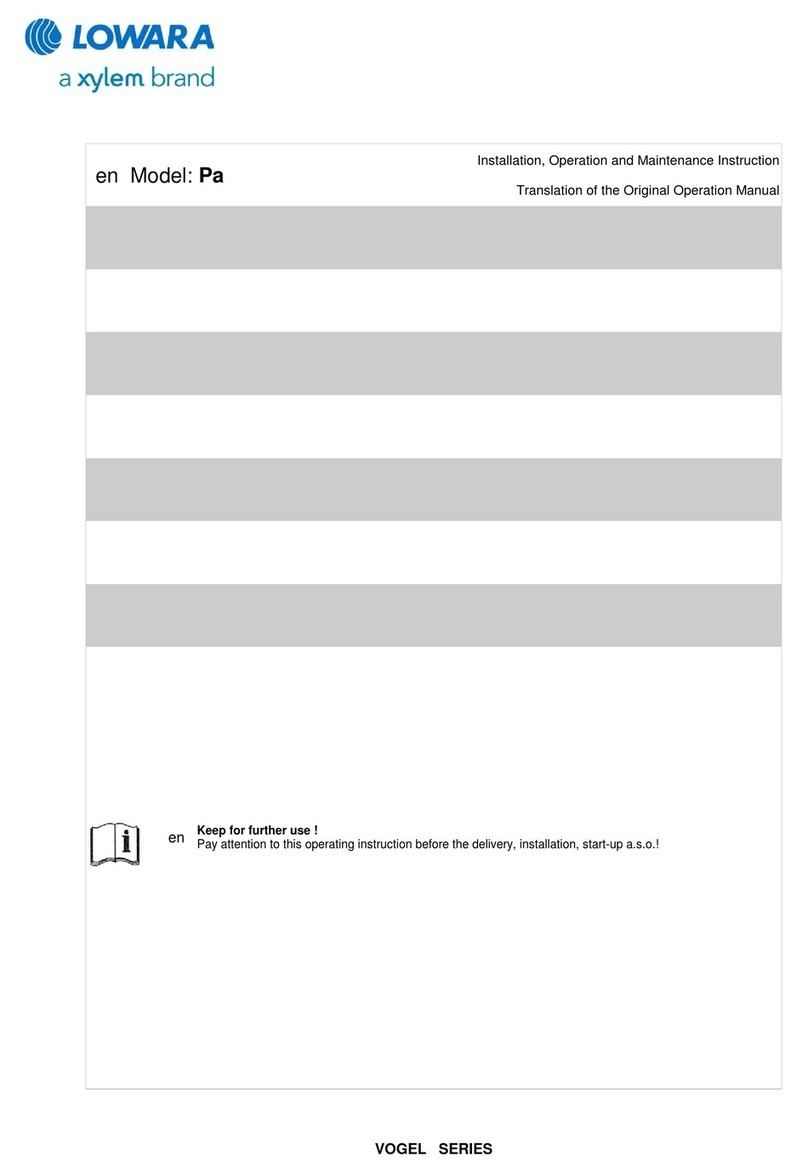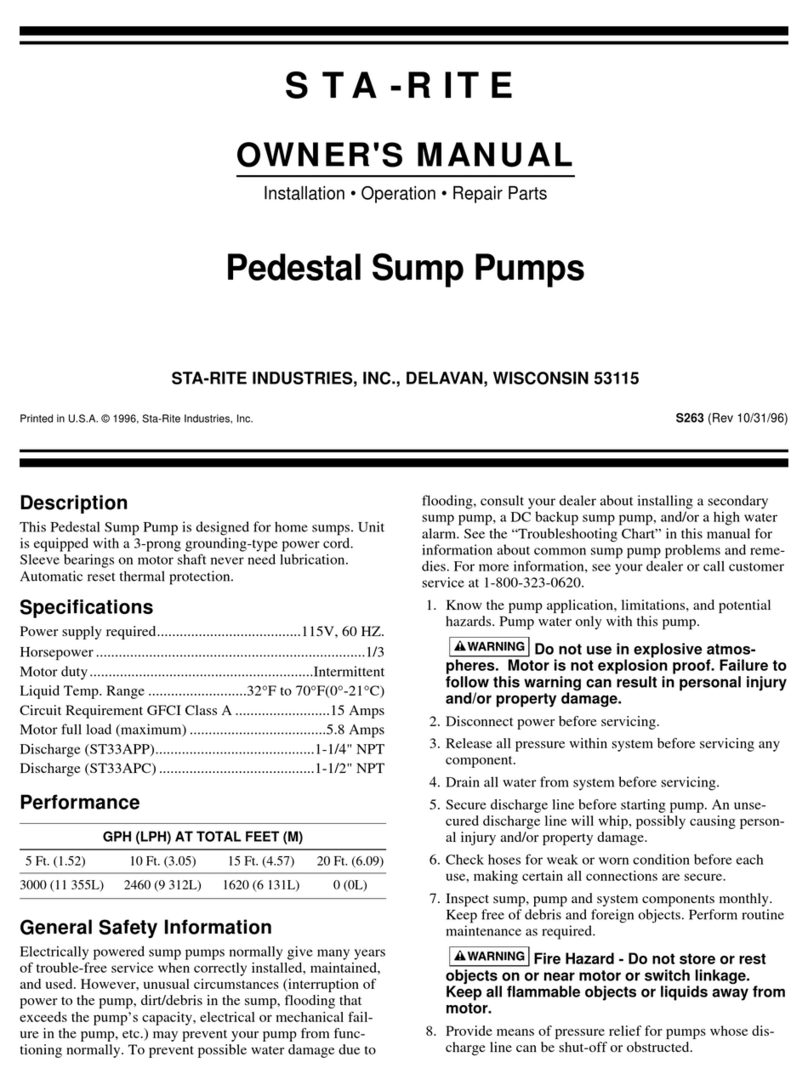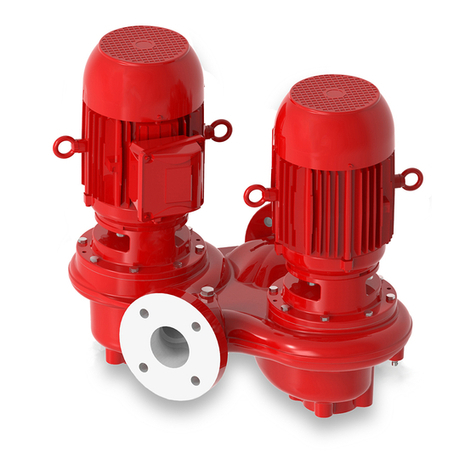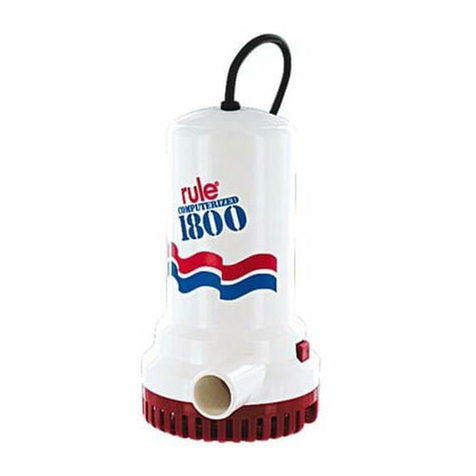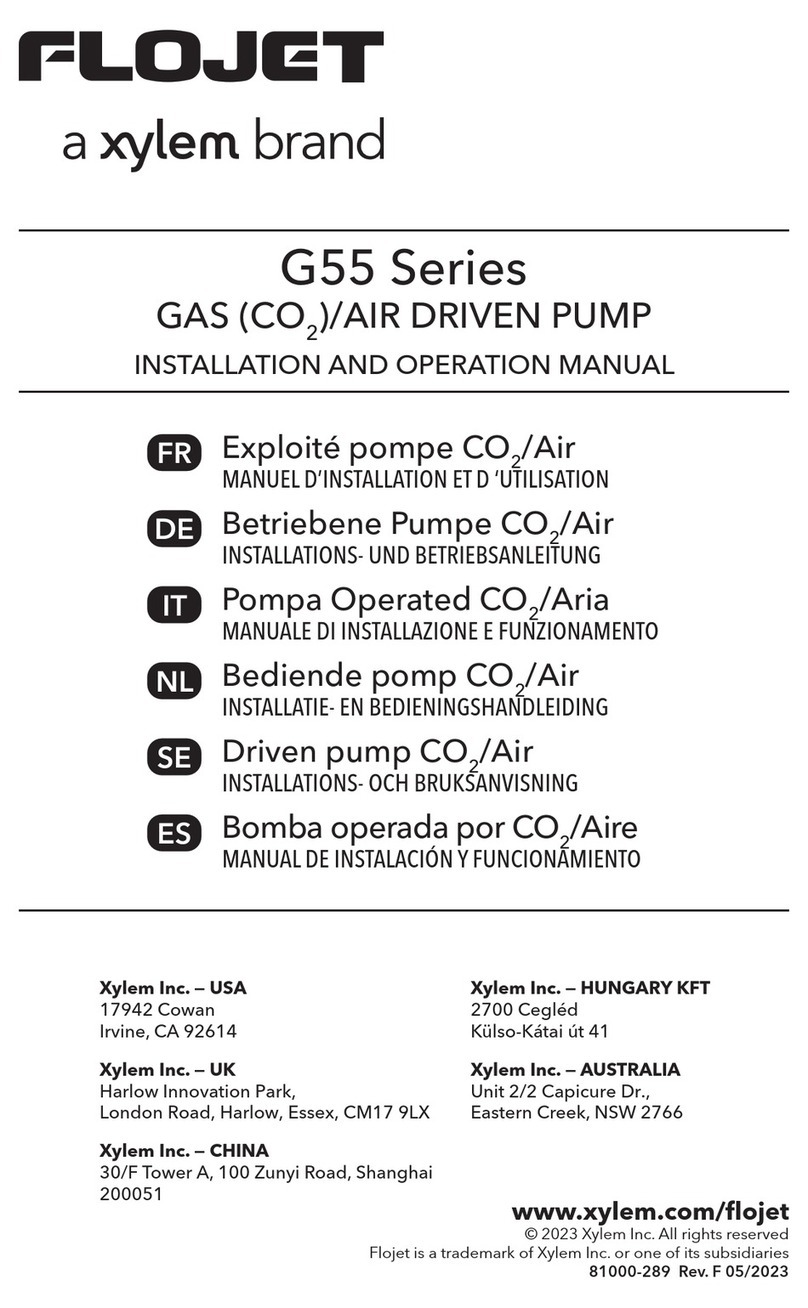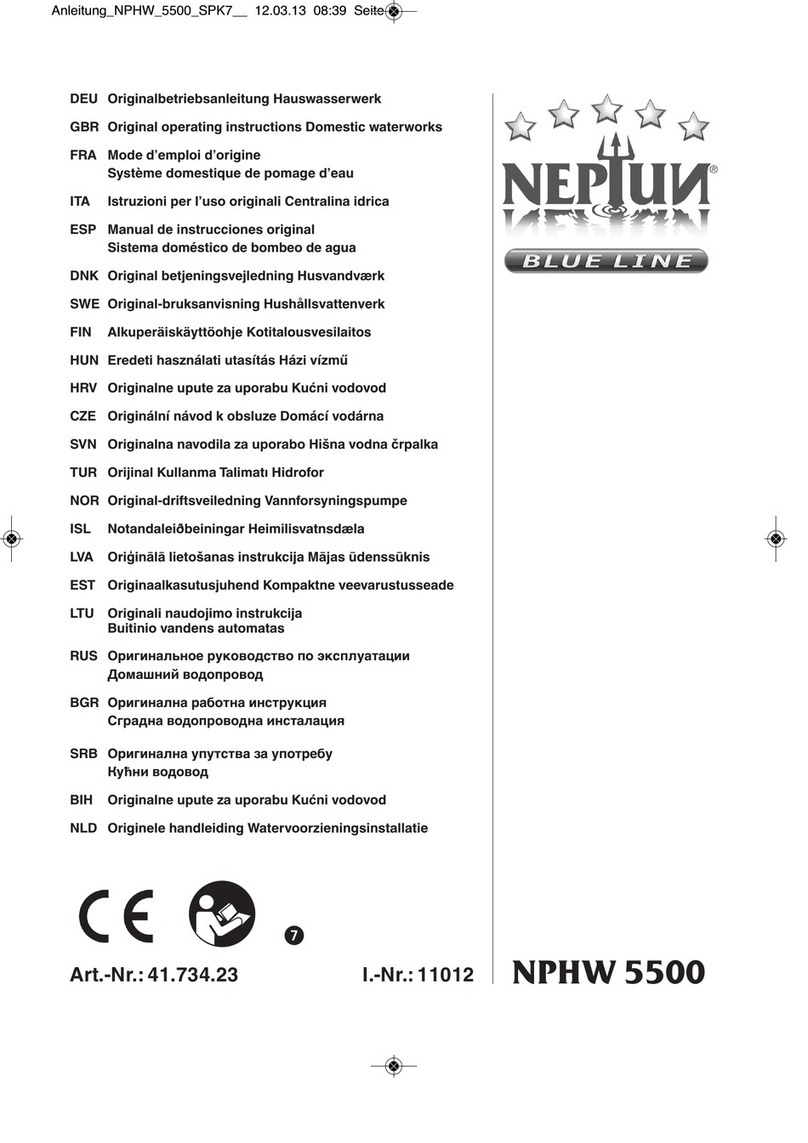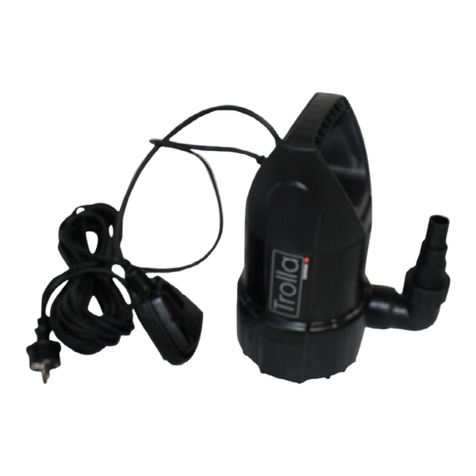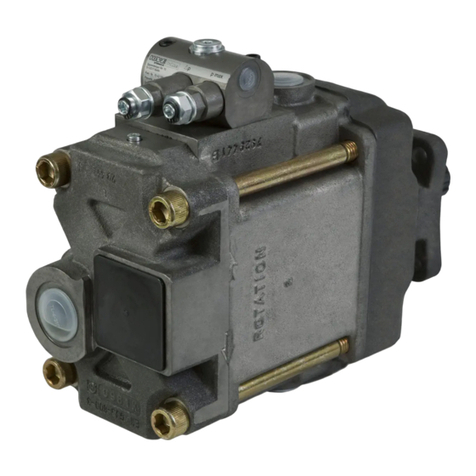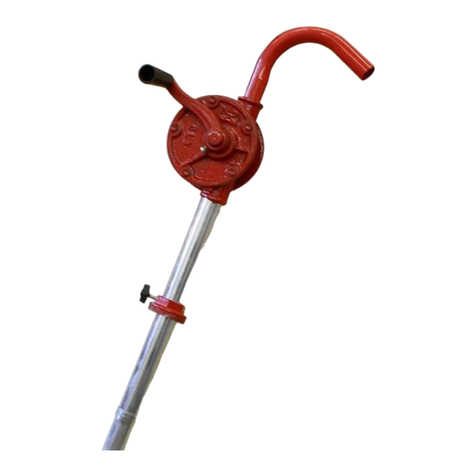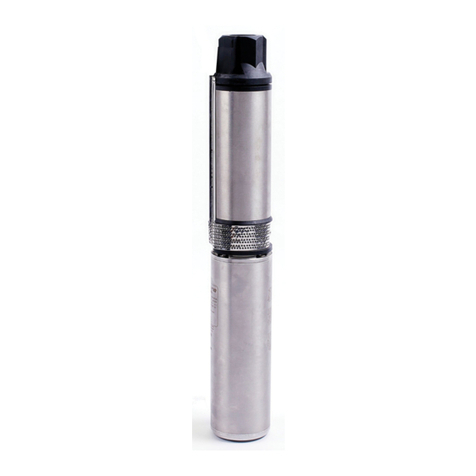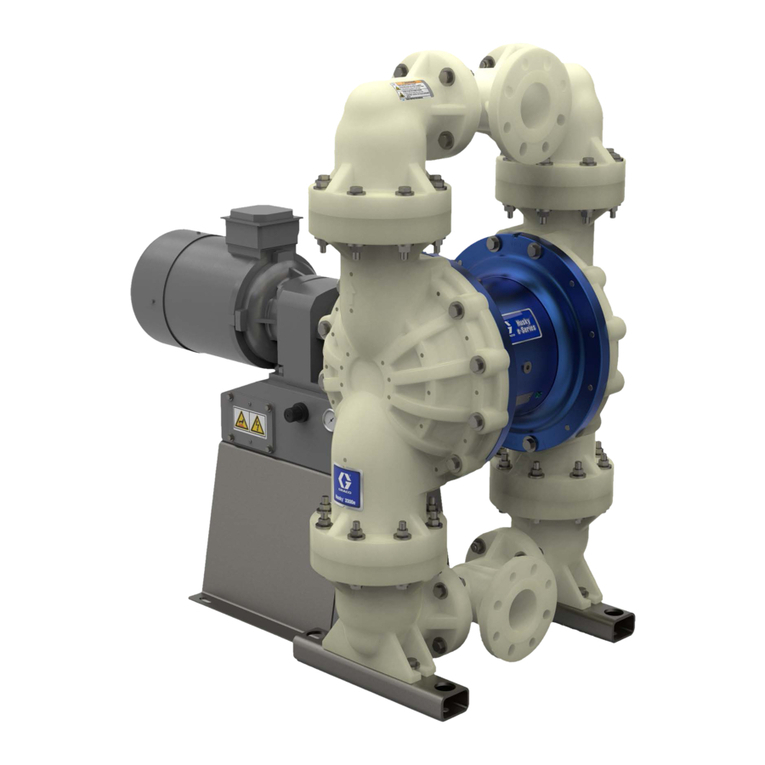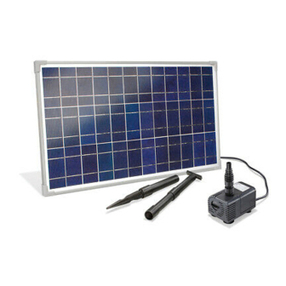
4 Piping requirements
WARNING:
• The heating of water and other fluids causes volumetric expansion. The associ‐
ated forces can cause the failure of system components and the release of high
temperature fluids. In order to prevent this, install properly sized and located
compression tanks and pressure-relief valves. Failure to follow these instruc‐
tions can result in serious personal injury or death, or property damage.
• To avoid serious personal injury and property damage. Make sure that the
flange bolts are adequately torqued.
NOTICE:
Never force piping to make a connection with a pump.
Check:
• Check that the pump is not supported by placing hangers or floor supports on the motor.
• Check that a section of straight pipe, with a length that is five times its diameter, is installed between the suction
side of the pump and the first elbow, or that a B&G Suction Diffuser is installed.
• Check that the suction and discharge pipes are supported independently by use of pipe hangers near the pump.
• Check that there is a strong, rigid support for the suction and discharge lines.
• For pumps with flanges, check that the bolt holes in the pump flanges match the bolt holes in the pipe flanges.
• Check that the suction or discharge lines are not forced into position.
• Check that fittings for absorbing expansion are installed in the system when considerable temperature changes
are expected.
• Check that you have a foot valve of equal or greater area than the pump suction piping when you use in an open
system with a suction lift.
• Check that a B&G Triple Duty® valve is installed in the discharge line.
• Check that the pipeline has isolation valves around the pump and has a drain valve in the suction pipe.
• Use PTFE tape sealer or a high-quality thread sealant when you install the suction and discharge connections to
a threaded pump housing.
• On an open system, check that the end of the suction pipe is at least 3 ft. below the surface of the water in the
suction well.
• Check that new flange gaskets are installed between the flanges of the pump body end suction and discharge
pipes. Make sure that these gaskets are clean and grease-free.
5 Preparation for startup
You must follow these precautions before you start the pump:
• Flush and clear the system thoroughly to remove dirt or debris
in the pipe system in order to prevent premature failure at ini‐
tial startup.
• Run a new or rebuilt pump at a speed that provides enough
flow to flush and cool the close-running surfaces of the stuffing
box bushing.
• If temperature of the pumped fluid will exceed 200°F (93°C),
then warm up the pump prior to operation. Circulate a small
amount of fluid through the pump until the casing temperature
is within 100°F (38°C) of the fluid temperature.
WARNING:
• Operating the pump in reverse rotation can result in the contact of
metal parts, heat generation, and breach of containment.
• Always disconnect and lock out power to the driver before you
perform any installation or maintenance tasks. Failure to discon‐
nect and lock out driver power will result in serious physical injury.
Check Drive Rotation:
1. Unlock power to the driver.
2. Make sure that everyone is clear, and then jog the driver long
enough to determine that the direction of rotation corresponds
to the arrow on the pump.
3. Lock out power to the driver.
For safety and correct product usage, read the manual before this product is used.
Xylem Inc.
8200 N. Austin Avenue, Morton Grove, IL 60053
Tel: (847) 966–3700, Fax: (847) 965–8379
www.xylem.com/bellgossett
P2005592_Rev A_en-US_2022-12_QG_Series e-80SCXL
Xylem and Bell & Gossett are registered trademarks of Xylem Inc. or
one of its subsidiaries. All other trademarks or registered
trademarks are property of their respective owners.
© 2022 Xylem Inc

